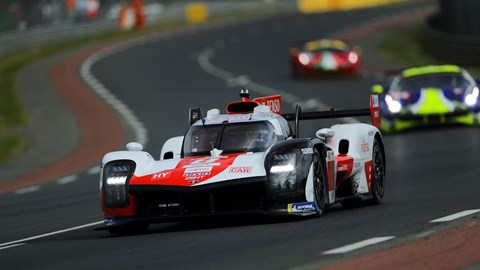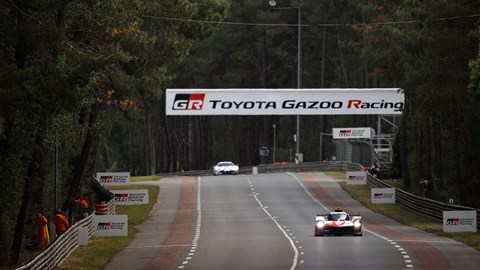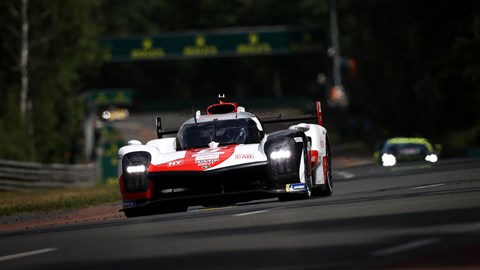► Traffic is a key aspect of Le Mans
► And could be the difference between winning or losing
► Here’s how Toyota driver Brendon Hartley sees it
Endurance races see several different classes at the track at one time, a that means overtaking cars and traffic is a key skill that every top driver needs to learn. With increased reliability and a faster pace, how you navigate through slower cars can win or lose you the race – and it’s become an area all top drivers need to learn.
To find out just how difficult it is to negotiate the traffic, and why it can be yet another game of risk and reward, we spoke to Toyota #8 driver and 2022 polesitter Brendon Hartley.

The situation
Le Mans has always been about fast, streamlined cars and GT racing, but there’s several classes involved at once – all with different levels of ability: ‘You’ve got amateurs, for the first time at Le Mans who – they’re good drivers and they’ve got their licence – but they haven’t seen every situation,’ explains Hartley. ‘Then you’ve got pro cars, you’ve got different speeds.’
‘You’re approaching these cars; you’re trying to figure out okay, have they seen me? Well, where are they going brake.’
Predicting movement
Racing-spec 911 GT3s, Vantages and Corvettes are hardly slow, but they’re nowhere near the pace of top LMH cars like the Glickenhaus or Toyota – and that means huge closing speeds. To get past without losing time, it’ll often be worth predicting where the other car will be.
‘A lot of the GT cars you get a feeling,’ Hartley reveals. ‘You more or less know how they’re going to interact on the kinks on the straight line. And then in the daytime particularly if you know if you’re approaching a car you can kind of see through the corner before how they’ve taken it. Look at what the what the level of the driving is.’

Risk and reward
Like everything at Le Mans, making your way through the traffic is about risk and reward – and the length of the race only amplifies the decision you make. Over 24 hours, the most minute gains and losses become significant.
‘We’re passing sometimes 20 cars per lap, and you’re always weighing up that risk and reward; that’s where a lot of time can be won or lost, but also, a whole race can can end right there,’ Hartley says. ‘But then also if you take not enough risk you can be clumsy you know, if you if you don’t commit to a move, it’s also bad. It’s either you go for it or you don’t.’
So where do you overtake?
Generally, you’ll see most cars overtake on the straights, as well as Turn 14 and Indianpolis, and there, lapping cars should be quite simple.
‘We flash the lights and you can be on the inside, they could leave you the space, they don’t take the apex there’s almost no time loss for them. Yeah, it’s a bit of a respect thing. But you can’t rely on everyone to do it.

Can slower cars help?
Unlike Formula One, where slower cars are compelled to instantly jump out the way (unless you’re Alex Albon in Monaco), most lapped cars at Le Mans – and it turns out top drivers like Hartley would prefer if they didn’t for reasons below.
‘It’s actually a big problem when cars try to get out of the way because we’re coming with such a big difference in speed,’ Hartley reveals. ‘We would we prefer you do what you’re doing. It’s our responsibility to get by; they drive their normal line and we assess if we can make it around the outside inside before the corner.
Actually, when drivers try to get out of the way it’s more confusing for us. And we’re all racing so they shouldn’t be getting out the way.’